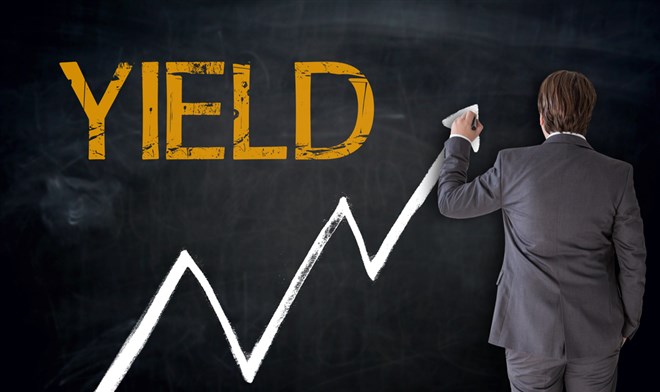
Key Points
- The dividend yield is an important metric for investors.
- The dividend yield formula is easy to use and apply.
- Focusing on yield can help improve portfolio returns.
The dividend yield shows the percentage of share price a company pays out in dividends each year. The dividend yield formula is your ticket to better investment returns. If you’ve been gauging your dividends by the distribution amount or failing to take relative yield into account when buying dividend stocks, you haven’t been maximizing your profits.
It’s worth understanding the definition of dividend yield, why the dividend yield is important, how to calculate the dividend yield and how to apply the knowledge to your investing methods.
What is a Dividend?
A dividend is a payment that a company makes to its investors. The dividend is usually but not always paid in cash and it is usually but not always paid from profits. The cases where it is not paid in cash or from profits are usually special situations such as stock splits or the return of capital from a business development company or other tax-sheltered vehicle. To put it simply, dividends are one of two reasons to own stocks, the other reason is growth.
Growth stock investing comes with more risk while dividend investing carries less risk. The trade-off is the potential for returns and differences in taxation. Growth stocks may return high-double or even triple digits in a short period, while dividend stocks will deliver lower returns over a longer time span. Knowing how to calculate dividend yield is as important to dividend investing as knowing the ex-date vs. date of record.
What is Dividend Yield?
What is dividend yield?
Dividend yield shows the percentage of share price that pays out in dividends. But what’s the most important metric to an income investor, at least when it comes to the distribution amount?
Who cares if the stock pays $5 per share if it only yields 0.5%? Not only is it prohibitively expensive to invest significant amounts of money into a stock that costs $1,000, but your returns won’t even outpace inflation.
Yield is important because it is a percentage of the stock's price and a better way to gauge returns. A stock that pays $1 per share may not be as glamorous as the one that pays $5. However, that may change if you know the yield percent as well. If that $1 is worth 5% in yield, a $1,000 investment will net you $50 per year compared to $5 or 900 times more in return. The top dividend stocks don’t always have the highest yield, but it helps.
What is the Dividend Yield Formula?
The formula for dividend yield is simple but important to know because the results change so quickly. Each time the price of a stock moves lower, its dividend yield goes up, which makes it more enticing for investors. The trick involves understanding which numbers to use and why it matters.
The dividend formula involves dividing the distribution amount (a dollar amount) by the stock price to see the percentage:
Dividend distribution amount / Stock price = Dividend yield
The percentage is the yield and it is similar to the yield on a savings account. The dividend yield at the time of purchase is the annual yield you can expect to receive on your original investment amount.
The numbers that matter include both the distribution amount and stock price. In the case of the distribution amount, you can use the trailing 12 months (TTM) distributions (data from the past 12 consecutive months used for reporting financial figures) or the expected dividend yield formula for future distributions. The TTM distributions refer to what the company has paid in dividends of the TTM. This is sometimes but not always the same as the expected dividends, which could be more or less than the TTM distributions.
If the company cut its payment during the year the future distributions and yield will be less (assuming no change in stock price). If the company is growing its dividend, the expected distribution and yield will be higher. That’s why this is the formula dividend yield you need to know.
The stock price is important because it tends to change on a daily basis. If the stock price trends higher and the distribution stays the same, the yield will fall and make the stock less attractive. Conversely, if the stock price falls, the yield will get larger and create potential buying opportunities for investors.
Learn more: What is a Good Dividend?
How to Use the Dividend Yield Formula
The dividend yield ratio formula is important not only for gauging the value of a stock and its dividend payment but is also important for your portfolio. You can use the formula to determine how much an investment will yield or how much income to expect from the portfolio as a whole.
How Much Does a Stock Yield?
A stock’s yield is a function of the price and the distribution amount. The distribution is the dividend amount in dollars, while the yield is that figure in percentage form. To find out what a stock yields, divide the expected distribution amount by the stock price. The higher the yield, the better, but within reason. High yields are good yields but not always great because they may warn of other dangers, including unsustainability.
How Much Does an Investment Yield?
The dividend yield formula can be applied to your investments as well. Once you know what the stock is yielding or expected to yield, multiply the investment amount by that figure. The resulting amount, a small percentage of the original investment, is the investment yield expressed in dollars.
This number is important for projecting annual returns and potential compounding. How many dividend stocks to own is an entirely different question, but also one to consider.
Example of Using the Dividend Yield Formula
The dividend yield formula is very easy to use and requires only two numbers: the amount of dividend distribution and the price of the stock. For example, The Kraft Heinz Company (NASDAQ: KHC) distribution amount in 2022 was $1.60 per share. If the stock trades at $40 per share, it yields 4%, which is high not only for the S&P 500 but also for the consumer staples sector. Here’s the calculation for the Kraft Heinz Company:
Dividend distribution amount ($1.60) / Stock price ($40) = 4%
Now that you know how to use the dividend yield formula, let's take a look at how to apply it. Kraft Heinz pays a high dividend yield of 4%. An income investor interested in the consumer staples sector may be interested in Kraft Heinz specifically for this reason. Unfortunately, yield alone is not a good reason to buy a stock but there may be other reasons to buy Kraft as well.
For example, Kraft Heinz trades at a value to its peers in the consumer staples group. Shares of KHC were trading in the range of 15x earnings, which is almost half of what the highest-valued stocks in the group are paying. If Kraft Heinz’s balance sheet and ability to pay dividends were healthy, it could mean a best buy for investors in this sector.
Stocks that pay a monthly distribution like some REITs and other tax-sheltered vehicles may be what matters, particularly if you depend on it for a monthly stream of income. In this case, if the figure is not readily available, divide the annual distribution by 12 and use that figure to calculate the monthly yield, like this:
(Dividend distribution ($10) / 12) / Stock price ($100) = 0.83%
You can also use the dividend yield as a trigger to enter an investment. If you wanted to get into a certain blue-chip Dividend Aristocrat but only if the yield was above 2%, you may have to wait to do it. Knowing the dividend yield formula allows you to figure out what price it would take to get a yield of 2% and that price can be used as a trigger to buy.
If the stock paid $1 while trading at $55, it would yield about 0.85%. A price drop to $50 or about 10% would bring the yield down to 2% and into an attractive range, like in this example:
Dividend Distribution ($1) / Desired Yield (2%) = $50
Why You Should Use the Dividend Yield Formula
There are a couple of reasons why you should use the dividend yield formula but they all boil down to one thing: You should know what it is and how to use it because it’s part of being a smart investor. All too often, the yield displayed on a stock market website is wrong, not because it gives poor data, but because there are different ways to calculate yield and some of the numbers used in the calculations change rapidly.
The Dividend Yield Formula: A Tool for Income Investors
The dividend yield formula is not difficult to master but will impact your investing from this day forward. While the dollar amount of a dividend is exciting, the yield counts for more.
Forward yield is all too often of more value to investors than the trailing yield. If you are going to invest in dividend stocks, you need to know the yield formula and where to find the best dividend stocks tool.
Get Income-Generating Stocks Like Kraft Heinz in Your Inbox.
Stop riding the roller coaster of the stock market and sign-up to receive DividendStocks.com's daily ex-dividend stocks and dividend investing news for KHC and related companies.
Companies Mentioned in This Article:| Company | Current Price | Price Change | Dividend Yield | P/E Ratio | Consensus Rating | Consensus Price Target |
|---|
| Kraft Heinz (KHC) | $27.82 | -1.1% | 5.75% | 12.70 | Reduce | $30.29 |

About Thomas Hughes
Experience
Thomas Hughes has been a contributing writer for DividendStocks.com since 2019.
- Professional Background: Thomas Hughes is the Managing Partner of Passive Market Intelligence LLC, a market research platform he launched in 2023 with the mission: “We watch the market so you don't have to.” He has worked as a blogger, stock market commentator, and independent analyst since 2010 and has been actively involved in trading and investing since 2005.
- Credentials: He holds an Associate of Arts in Culinary Technology—training that honed his discipline, attention to detail, and ability to anticipate outcomes, all of which carry over into his work as a market analyst.
- Finance Experience: Thomas has been writing about finance and investing since 2011, when he discovered it could be more than a personal passion—it could be a profession. He’s been a contributing writer for DividendStocks.com since 2019.
- Writing Focus: He specializes in the S&P 500, small-cap stocks, dividend and high-yield strategies, consumer staples, retail, technology, oil, and cryptocurrencies. His analysis blends chart-based technical setups with key fundamental insights, helping readers identify actionable trends.
- Investment Approach: Thomas takes a hybrid approach that combines technical analysis with deep fundamental research. He often writes about macroeconomic shifts, earnings trends, and sentiment-based trading signals.
- Inspiration: Thomas first became interested in stocks after attending a seminar on how to buy and sell your own shares. That event opened his eyes to the market's potential and sparked a lifelong interest in investing.
- Fun Fact: Thomas took up model railroading by accident a few years ago—and now he can’t stop running the rails.
- Areas of Expertise: Technical and fundamental analysis, S&P 500, retail and consumer sectors, dividends, market trends
Education
Associate of Arts in Culinary Technology